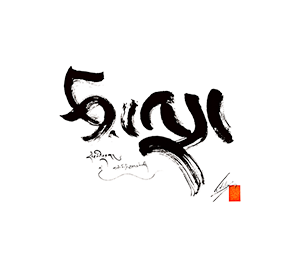A Second Tibetan Translation of the Tathāgatagarbhasūtra in the Newark Manuscript Kanjur from Bathang: A Translation of the Early Period (snga dar)
< Articles
| Citation: | Zimmermann, Michael. "A Second Tibetan Translation of the Tathāgatagarbhasūtra in the Newark Manuscript Kanjur from Bathang: A Translation of the Early Period (snga dar)." Transactions of the International Conference of Eastern Studies 43 (1998): 33-50. https://www.buddhismuskunde.uni-hamburg.de/pdf/5-personen/zimmermann/tohoku-gakkai-1998-tathagatagarbha.pdf. |
|---|
Abstract
Among the Tibetan Collection of the Newark Museum in Newark (New Jersey) there is an incomplete manuscript Kanjur from Bathang in Khams (East Tibet). In spite of the fact that this
Kanjur was already donated to the museum as early as 1920 it is surprising that it has only recently become the object of a scholarly treatment of some length.[1] In his critical edition of the Mahāsūtras (cp. n. 1), Peter Skilling has used internal criteria to prove that the Bathang Kanjur is affiliated to neither the Tshal pa lineage nor to the Them spangs ma lineage of textual transmission. Its independent character can also be ascertained by external kanjurological
criteria: the collection of the texts, its grouping and its order within the volumes are unique. It becomes, therefore, very plausible that "the Newark Kanjur belongs to an old and independent textual transmission that predates the compilation of the Tshal pa and Them spangs ma collections."[2]
Contained in the ta volume of the sūtra section (mdo bsde ta) of this Kanjur is the Tathāgatagarbhasūtra (TGS).[3] In the process of editing the Tibetan text of this important Mahāyāna work, of which no Indic copies have come down to us, I used most of the available, historically relevant Kanjurs.[4] Among these 13 versions alone the TGS found in this Kanjur from Bathang represents a different, second translation (Bth). As the existence of two independent Tibetan translations of the same Indic text are of rare occurrence, this study intends to throw light on the differences between the two Tibetan texts, to describe the particular features of Bth and finally to classify it within the history of Tibetan translation activities. (Zimmermann, introductory remarks, 33–35)
Notes
- For a description of the Kanjur cp. Eleanor Olson, Catalogue of the Newark Museum Tibetan Collection, Vol. III, Newark 1971, p. 114, dating it to the 16th century; the most detailed analysis of the 23 volumes of the Kanjur can be found in Peter Skilling's unpublished article Kanjur Manuscripts in the Newark Museum: A Preliminary Report, Nandapurī 1995; the only study including some texts of this Kanjur in a textcritical edition is Peter Skilling's (ed.) Mahāsūtras: Great Discourses of the Buddha, Vol. I: Texts, Oxford 1994 (The Pali Text Society, Sacred Books of the Buddhists Vol. XLIV).
- Skilling, Kanjur Manuscripts. . . . , p. 4.
- Vol. ta, folios 245b1–258a8. The title at the beginning of the volume reads de bzhin gshegs pa'i snying po zhes bya ba'i mdo' . The title at the beginning of the sūtra itself runs: de bzhin gshyes <pa'i> snying po zhes bya ba theg pa chen po'i mdo. It seems remarkable that the Tibetan equivalent for Skt. ārya, 'phags pa, does not appear in the titles of the Bathang translation whereas it is common to all the other major Kanjurs. The spelling mdo bsde can be found "consistently on all tags" (Skilling, Kanjur Manuscripts. . . , p. 6, n. 16).
- The critical edition of the TGS is part of a Ph.D. thesis to be submitted at the University of Hamburg. The collation comprises the versions of the TGS as contained in the Kanjurs from Berlin, Derge, Lithang, London, Narthang, Peking (Ōtani reprint), Phug brag (three versions), Stog, Tabo (fragmentary) and Tokyo (Toyo Bunko) compared with the two Chinese translations. Bth will be appended as a diplomatic edition.
